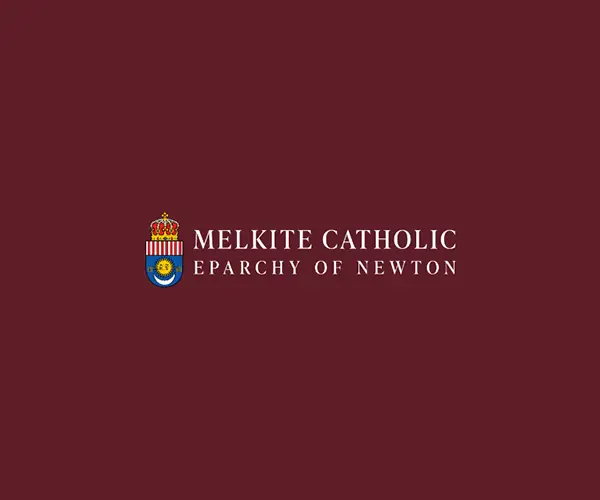Scripture records that there was a Christian community of Jewish origin in Damascus before Saint Paul’s conversion in 38 AD. The beginnings of the church in Antioch are documented in the New Testament also, where we see the Gospel brought to Antioch by Christians who fled Jerusalem when St. Stephen was martyred (c. 48 AD). It was at Antioch that the followers of Jesus were first called Christians (Acts 11:26) and it was in this same Church that the term “Catholic” was introduced by St. Ignatius of Antioch (c. 108 AD). The Melkites are the modern day descendents of the ancient Christians of Antioch.
The existence of Eastern Churches as part of the Catholic family, although they have distinct customs and traditions in all areas of Church life, dramatically shows that to be Catholic, one does not have to conform to the Roman model. Indeed, the Roman Church, as the Council affirmed, has learned many lessons of late from the East in the fields of liturgy (use of the vernacular, Communion in both kinds, baptism by immersion), of Church order (collegiality, synodal government, the role of the deacon), and spirituality. In a very real sense, the Western Church “needs” a vibrant Eastern Church to complement its understanding of the Christian message.
Melkites serve as a witness to:
- The Roman Catholic Church: We have maintained such practices as a married clergy, the election of bishops by the Church as a whole, and a collegial government for centuries. Many of these features are unknown to some Roman Catholics and many Catholics feel that our practices may be more suited to today’s world than their Roman counterpoint. Our presence is a witness to the universality of the Catholic Church.
- The Eastern Orthodox Churches: We exist as a living example that one can be true to a different heritage and yet be truly Catholic, i.e. in communion with Rome. Thus we exist as an example of what other Churches can expect if and when they too achieve a union with the Church of Rome.
- People Searching for Christ: Any church exists to bring its people to Christ. There are many for whom the ‘style of Christian living’ practiced in our Church is more compatible than contemporary Western forms. For these, the Melkite Church can serve a very important function, as it can be their way to God.
Life of St. John Chrysostom, our Patron
Feastday – November 13th
Saint John Chrysostom was born in Antioch, Syria around the middle of the fourth century. His father was an officer in the Roman army and his mother a woman of devout faith. At the age of twenty, he retired to the desert, outside the city of Antioch for prayer and fasting and eventually became a monk. After seven years in the desert, he was forced by failing health to return to Antioch in 381 A.D. and was ordained to the diaconate later that year. In 386 A.D., he was ordained to the priesthood and became what amounted to chancellor for the Archbishop of Antioch.
In 397 A.D., upon the death of Nectarius, Archbishop of Constantinople, Saint John was elected as his successor and installed as Patriarch of the capital city of the Empire in 398 A.D. Saint John was critical of many superfluous concerns of the Church of Constantinople and re-directed much of the wealth of the Church to assist the poor, establish monasteries, support hospitals and house the homeless. Through his preaching, Saint John won for himself the Empress Eudoxia as a violent enemy. She was disturbed by his public condemnations of her lavish living and had Saint John exiled in 403 A.D. The population of Constantinople, along with an earthquake, forced the Empress Eudoxia to reconsider the exile of the Patriarch and he returned to the city. For a period of four years, Saint John fluctuated between exile and his Patriarchal See at the instigation of the Empress Eudoxia and Emperor Arcadios. In 407 A.D., he died during a final exile at Comanos on September 14.
Saint John Chrysostom, meaning the “Golden-mouthed”, is remembered for his great homiletic eloquence and ranks as one of the greatest pastors of the Church. He is also commemorated on two other dates of our Byzantine Church calendar. On January 27th, the transfer of his holy remains from Comanos to Constantinople and on January 30th along with Saint Basil the Great and Saint Gregory the Theologian, the Feast of the Three Holy Hierarchs.
We celebrate his feast day on Nov. 13.

St. John Chrysostom is part of the Melkite Diocese of Newton, and covers the entire United States, with over 50 parishes and missions. Our diocesan offices and Cathedral are located in West Roxbury, MA. In addition, we have a co-cathedral in North Hollywood, CA.
Our Bishop, The Most Reverend François Beyrouti, is a full member of the Holy Synod of Antioch of the Melkite Greek Catholic Patriarchate and the National Conference of Catholic Bishops. Our Patriarch is His Beatitude, Joseph Absi, Patriarch of Antioch and All the East, of Alexandria and Jerusalem. The Patriarchate is today headquartered in Damascus, Syria.
For more information on our diocese, please visit the diocesan website:
http://www.melkite.org/
To locate other parishes throughout our diocese, please visit our diocesan website:
https://melkite.org/parish-locator.
